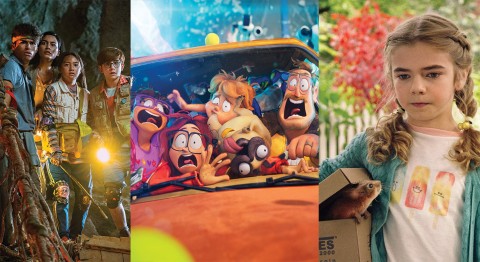
In the early weeks of the pandemic in New York City, when ambulance sirens were our soundtrack and we skipped daily walks because of the morgue trucks parked a few blocks away, family movie night on Sundays was often the only thing that structured a long, monotonous day at the end of a long, monotonous week. For the first few months we found ample outlet for our various emotional states; we wept our way through Inside Out and laughed uproariously at Paddington 2. But as the year wore on and we found ourselves dredging the back catalogs for Rio 2, the magic was giving way to a monotony of its own.
Imagine my delight, then, when this spring a new crop of family movies hit our streaming services, giving new life to our Sunday ritual. Flora and Ulysses (directed by Lena Khan, streaming on Disney+), Finding ‘Ohana (directed by Jude Weng, streaming on Netflix), and The Mitchells vs. the Machines (directed by Michael Rianda and Jeff Rowe, also on Netflix) were all widely enjoyed by all four members of our family (no small feat in itself). And all three illuminate the family movie formula: heroic adventure leads to renewed understanding of the family itself as a site of radical love and transformation.
After 14 months of sustained research, I’ve come to realize there is a difference between a kid’s movie and a family movie. A kid’s movie is something a kid can watch all by herself, even in excerpted scenes divorced from the plot as a whole—think Moana or the Frozen movies. The best of the genre recognize that adults may be along for the ride and build in plenty of wry humor and poignant themes. A kid’s movie can often make a perfectly lovely choice for family movie night.




